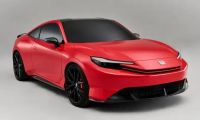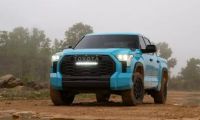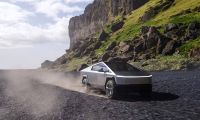Tesla Confirms 50% of New Vehicles use Cobalt-Free LFP Batteries
Tesla just confirmed through an announcement that close to half of all its current vehicles being produced at all its giga factories are being produced with cobalt free iron phosphate, also known as LFP batteries.
When you hear information like this, you can draw some conclusions based on what you know about Tesla. For instance, Tesla's vehicles that are RWD (rear wheel drive) or standard range are being produced with LFP batteries. One can infer that half of Tesla's ordered models are RWD or standard range then.
Elon Musk, the CEO of Tesla, has made it very clear that Tesla wants to move more and more of its cars to LFP batteries in order to circumnavigate the supply challenges with nickel and cobalt. This is a smart move and iron is an abundant mineral in the earth.
Another advantage of LFP batteries, besides not using scarce and supply chain constrained resources is that they are generally less expensive and more safe. The disadvantage is that these LFP batteries have less energy density, which means you won't get as much performance or range. But for someone like me who wants a long lasting vehicle, I'm OK with this tradeoff.
Further Developments With LFP Batteries
LFP batteries have been improving. For instance, the RWD Model 3 I have on order is at 272 miles of range and can be charge fully. If you take the 356 mile long range Model 3 and take 80% of that, you get 284.8 miles - pretty close to the LFP version. Now granted, the long range Model 3 has other features that make it better overall, but the range is very similar based on not charging the long range Model 3 to full.
Another advantage of making standard range vehicles with LFP batteries is that the rest of the resources needed for fast performing and long range vehicles become freed up for those vehicles where it makes sense to do so. In China, Tesla is producing the standard range Model 3 and Model Y with LFP battery cells, which will free up more scarce and supply chain constrained cobalt and nickel.
Tesla has made it clear that LFP batteries are important for the future of moving to sustainable energy and now that we have Tesla's Q1, 2022 financial results, we got the confirmation that close to half of Tesla's vehicles produced are using LFP batteries.
In fact, Drew Baglino, SVP of Power Train for Tesla was asked how fast and Tesla switch the battery chemistry to LFP. His response was saying that half of Tesla's products were LFP for the last quarter and that shows a great ability to respond. Tesla did this because it was the right thing to do.
I'm looking forward to improvement in LFP battery range, if possible, but 272 miles of range on a Model 3 is fine by me. What do you think the range of LFP batteries will be in 5 years for a standard range Model 3?
Leave your comments below, share the article with friends and tweet it out to your followers.
Jeremy Johnson is a Tesla investor and supporter. He first invested in Tesla in 2017 after years of following Elon Musk and admiring his work ethic and intelligence. Since then, he's become a Tesla bull, covering anything about Tesla he can find, while also dabbling in other electric vehicle companies. Jeremy covers Tesla developments at Torque News. You can follow him on Twitter or LinkedIn to stay in touch and follow his Tesla news coverage on Torque News.












